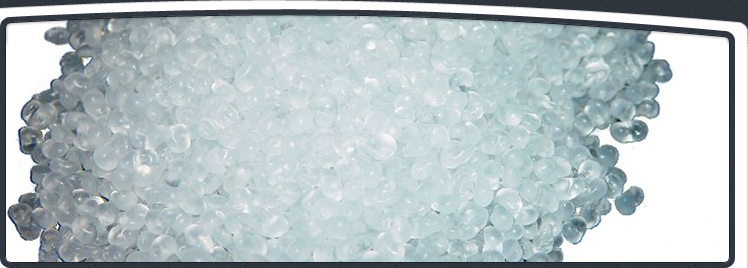Sales (800) 382-3229

|
Section 1: Identification Product Name: Akron Ultra Metal Mold Beads™
Manufacturer: Zero-D Products, Inc. 37939 Stevens Blvd. Willoughby, OH 44094 Phone: (440) 942-5005 or (800) 382-3229
Recommended Use: Plastic Modification, Wax injection for metal molds.
Section 2: Hazard(s) Identification This product is non-hazardous according to the U.S. Department of Transportation code of Federal Regulations Title 49. HMIS Hazard Ratings: Health-0, Flammability-1, Chemical Reactivity-0 Exposure Limits: as Nuisance dust, 15.0 mg/m3, Dust accumulation may require a static charge which could ignite the combustible particles. Inhalation: Not a hazard at ambient temperature. Vapors, fumes or sprays which can form at elevated temperatures are irritants to the eyes and respiratory tract. Fine dust may cause respiratory tract irritation. Eyes: Fine dust may scratch eye surface. Vapors, fumes or sprays which can form at elevated temperatures can be irritants. Skin: Contact with molten material will cause thermal burns.
Section 3: Composition/Information on Ingredients Chemical Name: CAS#: Polyethylene 100% 9002-88-4
Section 4: First-Aid Measures Inhalation: If overcome by dust or vapors move to fresh air Eye Contact: If dust or molten material contacts the eye, immediately flush with plenty of water for at least 15 minutes. If irritation persists, get medical attention immediately. Skin Contact: For thermal burns, flush or submerge effected area in cold water to dissipate heat. Cover with clean bandage material. Do not peel material from skin. Get medical attention. For contact at ambient temperatures, wash with soap and water. Ingestion: Material is not expected to be absorbed from the gastrointestinal tract so induction of vomiting should not be necessary. Special Precautions/Procedures: Use good hygiene controls. Wash hands thoroughly after handling before eating or smoking. Burns should be treated as thermal burns. The material will come off as healing occurs; therefore, immediate removal from the skin is not necessary.
Section 5: Fire-Fighting Measures Flash Point: 343°C min (650°F) estimate ASTM E-136; combustible solid Extinguishing Media: water fog, dry chemical, foam, carbon dioxide Hazardous Decomposition: Carbon dioxide, carbon monoxide, formaldehyde, acetaldehyde, irritating smoke. General Fire and Explosion Hazards: Solid product will burn at or above the flash point. Oxygen lean conditions may produce toxic gases, acrid fumes, irritating smoke. Product may accumulate a static charge which could result in an electrical discharge that could ignite polymer dust. Use all necessary protective fire-fighting equipment such as gloves, face shield, respirator
Section 6: Accidental Release Measures Spill or leak: Sweep or shovel up, place in a container for salvage or disposal. Product is non-hazardous in its delivered form. Dispose at an approved facility in accordance with any applicable regulations under the Resource Conservation and Recovery Act (RCRA).
Section 7: Handling and Storage Personal Precautionary Measures: Avoid contact with molten material; do not breathe fumes, vapors, dust or sprays from molten or burning material. When processing at >600°F (315°C), consider use of a respirator to avoid breathing decomposition products. Prevention of Fire and Explosion: Keep from contact with incompatible materials. Minimize dust generation and accumulation. Because product may accumulate a static charge, use proper bonding and/or grounding procedures prior to transfer. Storage: Keep container closed and in ventilated area, away from ignition sources, heat, open flames, and direct sunlight. Do not store with incompatible materials.
Section 8: Exposure Controls/ Personal Protection Occupational Exposure: Nuisance dust TLV: 10 mg/m3 (ACGIH) Ventilation: Good general ventilation (typically 10 air changes per hour) should be used. Ventilation rates should be matched to conditions. Supplementary local exhaust ventilation, closed systems, or respiratory and eye protection may be needed in special circumstances; such as poorly ventilated spaces, very hot processing, evaporation of liquids from large surfaces, spraying of mists, mechanical generation of dusts, drying of solids, etc. Respiratory Protection: If engineering controls do not maintain airborne concentrations to an acceptable level, an approved respirator must be worn. In the United States of America, if respirators are used, a program should be instituted to assure compliance with OSHA Standard 29 CFR 1910.134. Respirator type: dust, organic vapor. Protective Clothing/Equipment: Wear goggles or a face shield when working with molten material or when dust is generated. Wear thermally resistant gloves and long sleeves when handling molten product. Recommended Decontamination Facilities: eye bath, washing facilities
Section 9: Physical and Chemical Properties Appearance: Solid wax beads Color: Clear Whitish Odor: odorless to mild Specific Gravity: 0.90-0.92 @ 25°C Softening point: >100°C (212°F) (RBSP, ASTM E-28)
Section 10: Stability and Reactivity Reactivity: Non-reactive Hazardous Decomposition Products: Product reacts with strong oxidizing agents, fluorine. Chemical Stability: Stable
Section 11: Toxicological Information Inhalation: Individuals with chronic respiratory disorders may be adversely affected by any fume or airborne particulate exposure. Use in well ventilated area. Toxicity data is limited. There has been no evidence of acute toxicity, skin sensitization, or sub-acute subchronic toxicity as a result of repeated exposure.
Section 12: Ecological Information No tests have been performed. This product is not expected to present any environmental problems.
Section 13: Disposal Considerations Discharge, treatment, or disposal may be subject to national, state, or local laws. Incinerate or landfill in accordance with local regulations.
Section 14: Transport Information Non Hazardous by road, air, rail or sea No special handling needed. For transportation purposes, this product is non-hazardous according to the US Department of Transportation code of Federal Regulations Tile 49.
Section 15: Regulatory Information None
Section 16: Other Information Created new on 10/8/14 by Zero-D Products, Inc. 37939 Stevens Blvd. Ph. (440) 942-5005
As conditions or methods of use are beyond our control, we do not assume any responsibility and expressly disclaim any liability for any use of this material. The information and recommendations herein contained are based upon data, which to the best of our knowledge and belief, is accurate and reliable. With respect to the information and recommendations contained herein, Zero-D Products makes no representations or warranties of any kind, expressed or implied. |
Manufacturer of the most dependable and consistent mold rubbers available today.